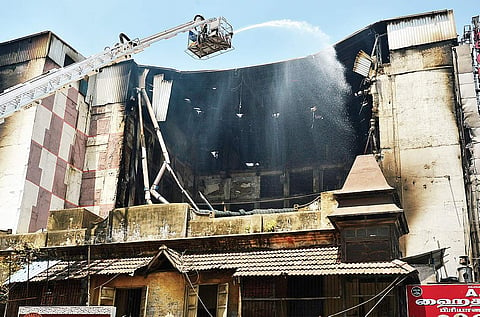

CHENNAI: It was not just fire service officers and planners who found serious lacunae in the fire safety norms followed by Chennai Silks, the clothing and jewellery retail store at T Nagar that was gutted by an early morning fire on Wednesday.
Even a fire consultant, who formerly advised the firm, has raised serious allegations of non-compliance, including that the water sprinklers on the ceiling were not even connected to the pipes which he had mentioned in his report four years ago.
“The building did not meet even one of the important requirements adequately,” said Shivaramakrishnan V, recalling his findings in 2013 when he was a consultant. However, their professional relationship did not continue due to mismatch in perspectives.
In planning parlance, any building taller than 15 mtrs comes under the category of high-rise. As part of fire safety norms, it should have a sprinkler for every 12 square metre, internal and external hydrants (hose-reel) for every floor, a water sump apart from the one used for domestic purpose of 1.75 lakh litres capacity, an electric or diesel pump of 2,850 litres/minute capacity, a jockey pump of capacity 180 litres/minute and a competent fire alarm system.
“It only had the low intensity pump which is used for minor fire accidents,” Sivaramakrishnan charged, pointing out that the high-capacity pump is indispensable for firefighting. The building did not have a separate sump for fire-safety with the advised capacity, he added.
Referring to media reports that fire officers struggled for hours before identifying the origin of flame, he said a proper fire-alarm system would be able to track the origin.
“If the smoke detectors were connected to the appropriate addressing system, we would have been able to spot which smoke detector sensed the accident first,” he said. On the other hand, if smoke detectors are not updated after modification or renovation of interiors, the personnel may end up at the wrong site looking for fire and get trapped.
He added that this was the case with the sprinklers too. Noting that the shops change their interiors every season to attract customers, he said, “To dismantle and plug the sprinkler into pipes would be a tedious task each time. They had simply plugged sprinklers into the wrong location or into places the water does not flow, just for inspections,” he said.